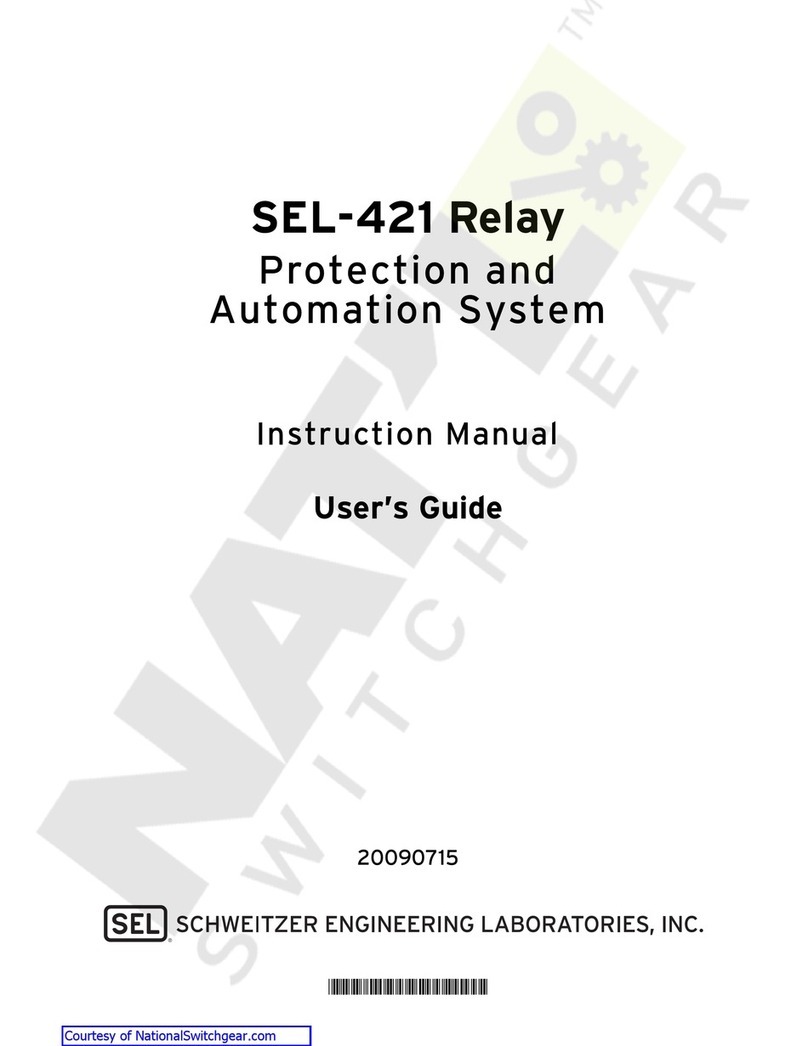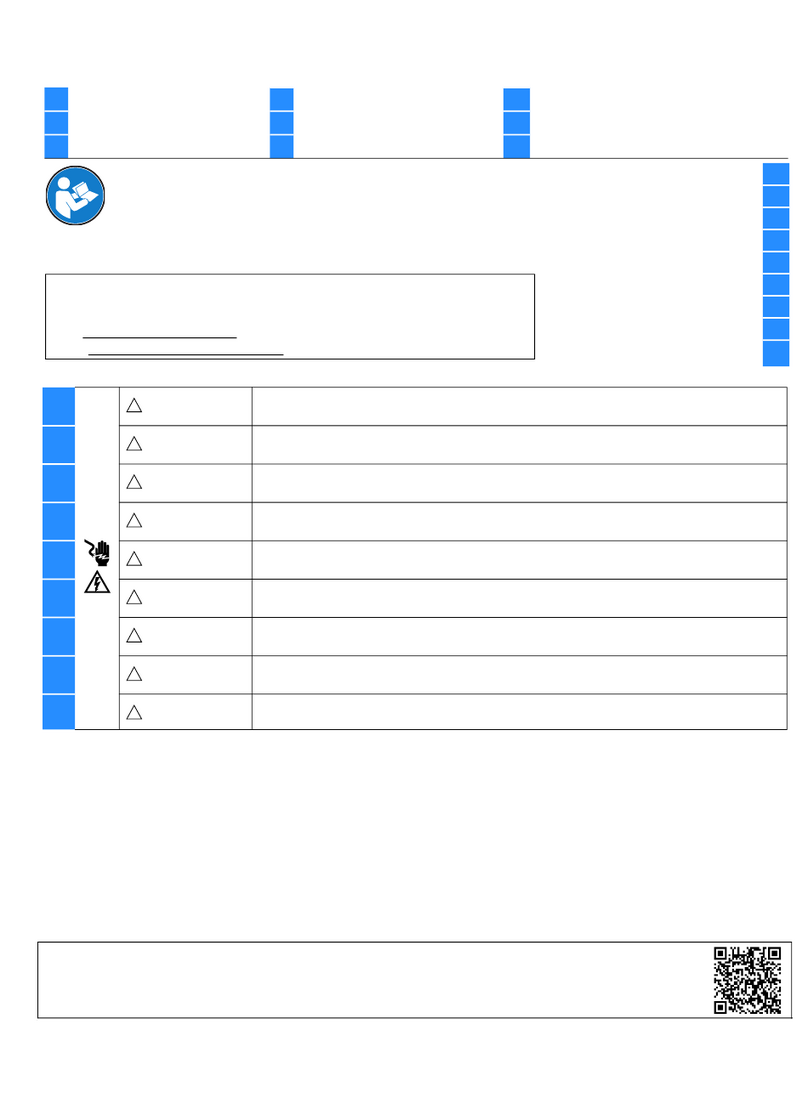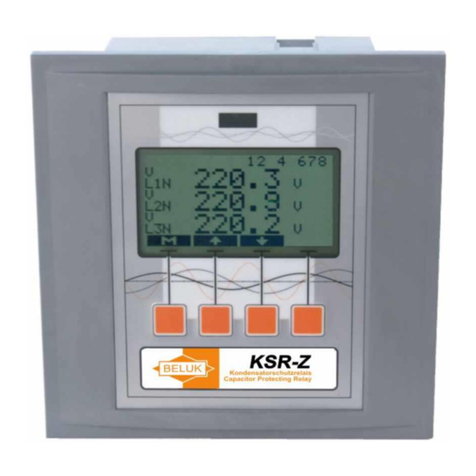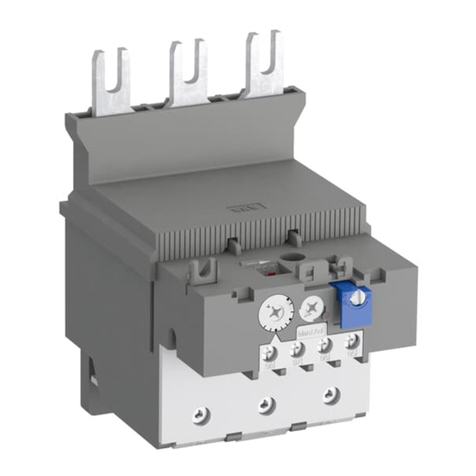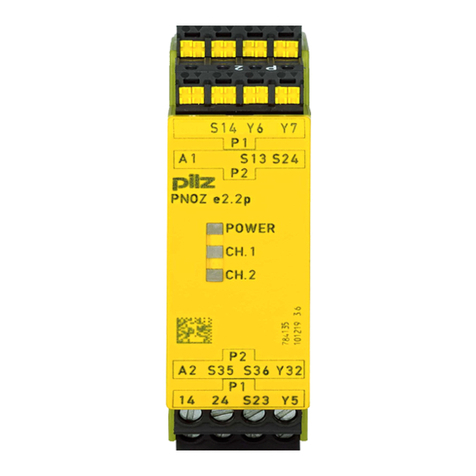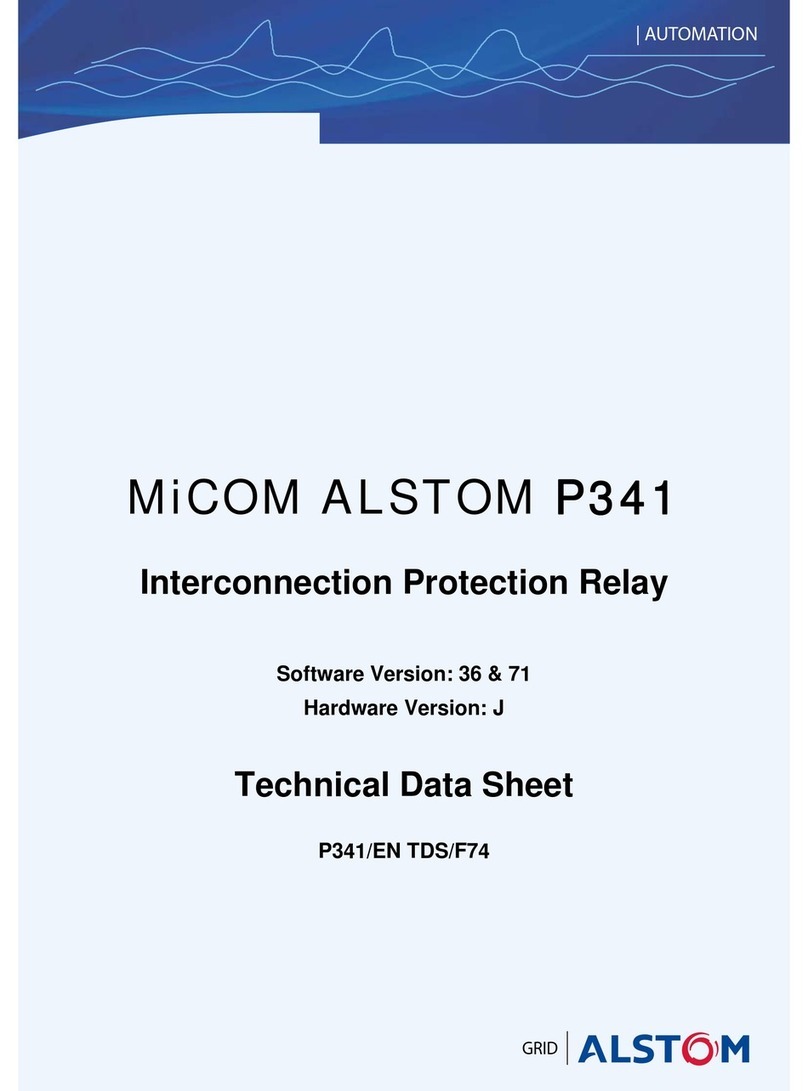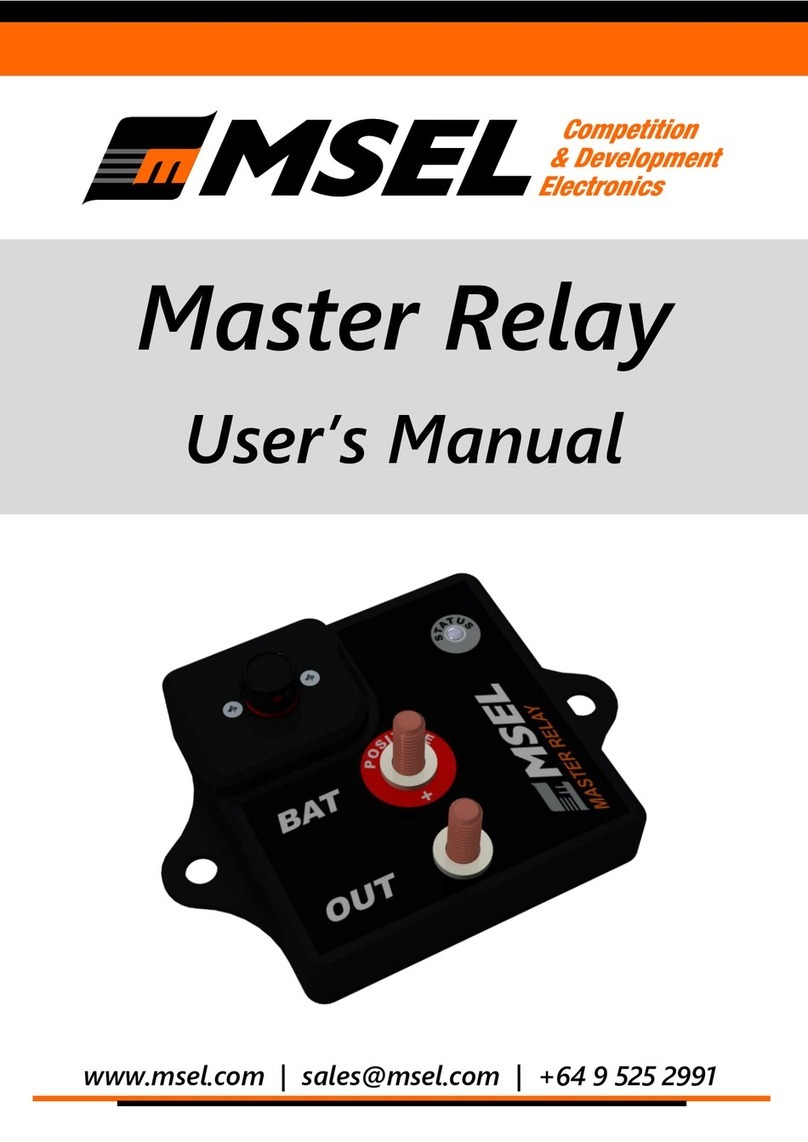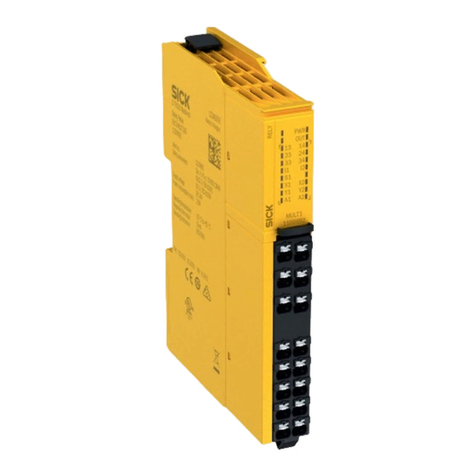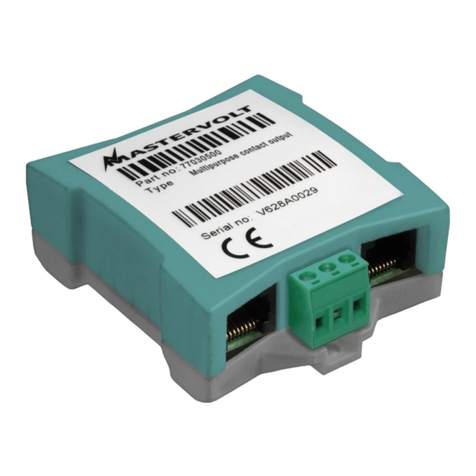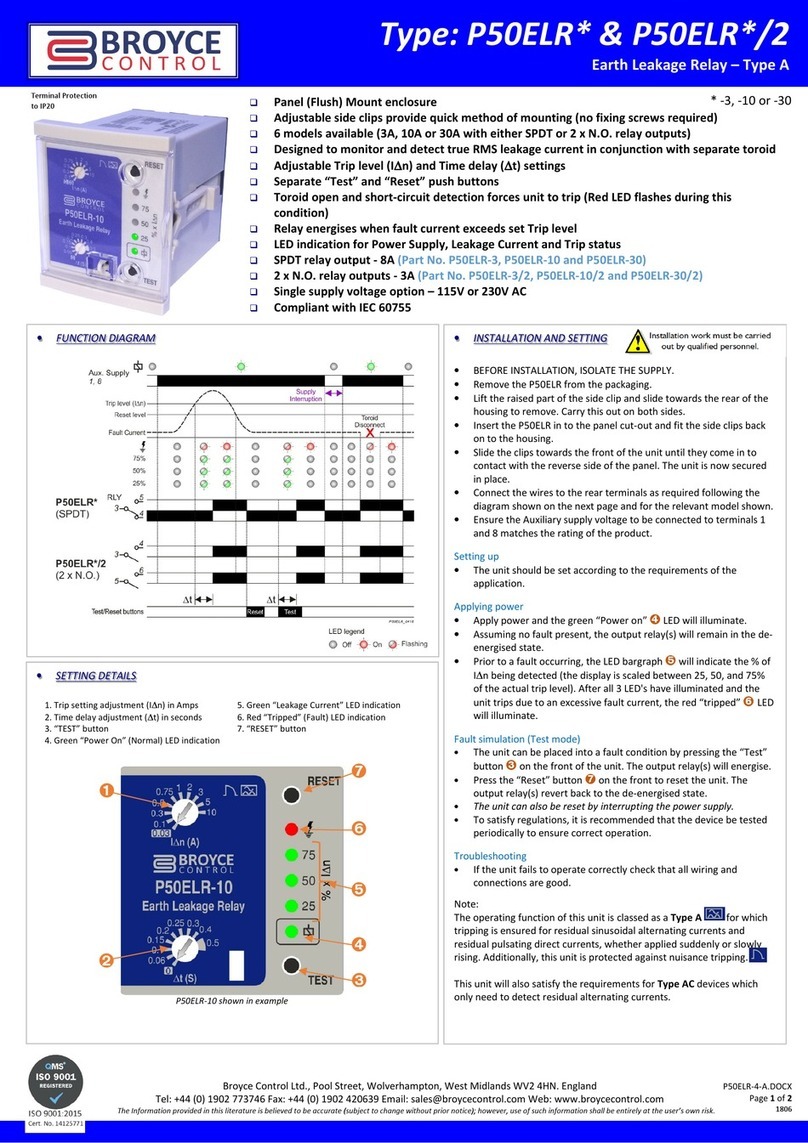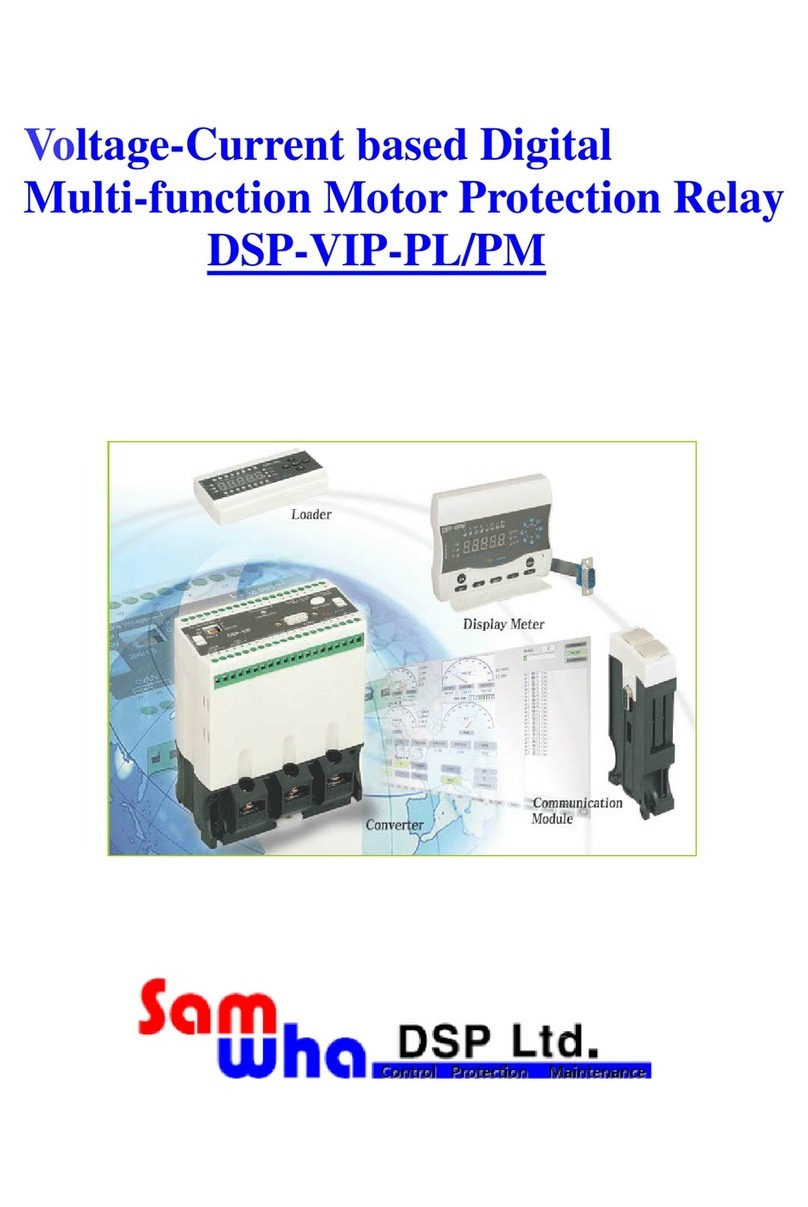BMW LCI 3 2015 Series User manual

Technical Training
The information contained in this manual is not to be resold, bartered, copied or transferred
without the express written consent of BMW of North America, LLC ("BMW NA").
3 SERIES LCI
Reference Manual

Technical�training.
Product�information.
BMW�Service
3�SeriesLCI

General�information
Symbols�used
The�following�symbol�is�used�in�this�document�to�facilitate�better�comprehension�or�to�draw�attention
to�very�important�information:
Contains�important�safety�information�and�information�that�needs�to�be�observed�strictly�in�order�to
guarantee�the�smooth�operation�of�the�system.
Information�status�and�national-market�versions
BMW�Group�vehicles�meet�the�requirements�of�the�highest�safety�and�quality�standards.�Changes
in�requirements�for�environmental�protection,�customer�benefits�and�design�render�necessary
continuous�development�of�systems�and�components.�Consequently,�there�may�be�discrepancies
between�the�contents�of�this�document�and�the�vehicles�available�in�the�training�course.
This�document�basically�relates�to�the�European�version�of�left�hand�drive�vehicles.�Some�operating
elements�or�components�are�arranged�differently�in�right-hand�drive�vehicles�than�shown�in�the
graphics�in�this�document.�Further�differences�may�arise�as�the�result�of�the�equipment�specification�in
specific�markets�or�countries.
Additional�sources�of�information
.
Further�information�on�the�individual�topics�can�be�found�in�the�following:
• Owner's�Handbook
• Integrated�Service�Technical�Application.
Contact:�conceptinfo@bmw.de
©2015�BMW�AG,�Munich
Reprints�of�this�publication�or�its�parts�require�the�written�approval�of�BMW�AG,�Munich
The�information�contained�in�this�document�forms�an�integral�part�of�the�technical�training�of�the
BMW�Group�and�is�intended�for�the�trainer�and�participants�in�the�seminar.�Refer�to�the�latest�relevant
information�systems�of�the�BMW�Group�for�any�changes/additions�to�the�technical�data.
Information�status:�March�2015
BV-72/Technical�Training

3�SeriesLCI
Content
1. Introduction.............................................................................................................................................................................................................................................1
1.1. History......................................................................................................................................................................................................................................2
1.2. Models.....................................................................................................................................................................................................................................2
2. Equipment�Level.............................................................................................................................................................................................................................3
2.1. Exterior....................................................................................................................................................................................................................................3
2.2. Interior...................................................................................................................................................................................................................................... 4
3. Powertrain.................................................................................................................................................................................................................................................. 5
3.1. Overview�of�engines......................................................................................................................................................................................... 5
3.1.1. Gasoline�engines.................................................................................................................................................................. 5
3.1.2. Diesel�engines...........................................................................................................................................................................5
3.2. Manual�transmission.........................................................................................................................................................................................6
3.2.1. Gearshift�arm�bearing....................................................................................................................................................6
3.2.2. Engine�speed�adaptation�for�a�gear�change..............................................................................7
3.2.3. Gear�sensor.................................................................................................................................................................................7
3.3. Automatic�transmission............................................................................................................................................................................... 8
3.3.1. Emergency�release............................................................................................................................................................9
3.3.2. ConnectedShift................................................................................................................................................................... 10
4. General�Vehicle�Electronics................................................................................................................................................................................. 11
4.1. Bus�overview.............................................................................................................................................................................................................11
4.2. Lighting,�front.......................................................................................................................................................................................................... 13
4.2.1. Halogen�headlights....................................................................................................................................................... 13
4.2.2. LED�headlights.................................................................................................................................................................... 14
4.3. Rear�lights..................................................................................................................................................................................................................... 16
4.4. Assistance�systems....................................................................................................................................................................................... 17
4.4.1. Overview.........................................................................................................................................................................................17
4.4.2. Lane�change�warning�..............................................................................................................................................17
4.4.3. Parking�assistant...............................................................................................................................................................17
4.4.4. Park�Distance�Control...............................................................................................................................................19
5. Information�and�Communication�.............................................................................................................................................................. 21
5.1. Headunits....................................................................................................................................................................................................................... 21
5.1.1. Overview�of�headunits............................................................................................................................................. 21
5.1.2. Head�Unit�Basis..................................................................................................................................................................21
5.1.3. Head�Unit�High�2..............................................................................................................................................................22
5.2. Telematic�Communication�Box�2�........................................................................................................................................... 24
5.2.1. F31�LCI.............................................................................................................................................................................................24
5.2.2. F30�LCI.............................................................................................................................................................................................24


3�SeriesLCI
1.�Introduction
1
In�July�2015,�the�model�revision�or�Life�Cycle�Impulse�(LCI)�of�the�BMW�3�Series�will�be�launched
on�the�market.
The�characteristic�BMW�proportions,�the�short�overhang�at�the�front,�the�long�wheelbase�and
the�extended�hood�transmits�a�dynamic�image,�even�when�the�vehicle�is�stationary.�The�changes
undertaken�in�the�model�revision�add�further�emphasis�to�this�impression.
F30�LCI/F31�LCI
To�aid�understanding,�the�model�revision�of�the�BMW�3�Series�is�referred�to�in�this�document�as
the�"BMW3�SeriesLCI",�or�the�individual�development�series�"F30LCI"�and�"F31�LCI".
The�most�important�changes�with�the�BMW3�SeriesLCI�are:
• Modified�front�and�rear�bumpers
• More�premium�feel�to�the�vehicle�interior,�e.g.�through�the�use�of�chrome�inlays
• New�engine�generation
• ConnectedShift
• LED�headlights
• Modified�halogen�headlight�with�LED�daytime�driving�lights
• Modified�rear�lights
• Enhanced�Parking�Manoeuvring�Assistant
• New�headunit
• New�telematics�control�unit
In�addition�to�the�wide�range�of�optional�equipment�available,�the�BMW3�SeriesLCI�can�also�be
individualized�through�the�following�equipment�packages:
• M�Sport�Package
• Luxury�Package
• Track�Handling�Package
The�BMWModernLine�equipment�package�will�no�longer�be�available.

3�SeriesLCI
1.�Introduction
2
1.1.�History
The�first�3-Series�BMW�was�introduced�in�1975�as�a�technical�further�development�of�the�2-Series.
This�means�that�the�BMW�3�Seriescan�celebrate�40years�on�the�road�this�year.
Outlined�below�are�the�six�generations�of�the�3�Series.�The�data�is�based�on�the�four-door�Saloon�(with
the�exception�of�the�two-door�E21).
Explanation E21 E30 E36 E46 E90 F30
Sales�period 1975
and
1983
1983
and
1990
1991
and
1998
1997
and
2005
2005
and
2012
since
2012
1.2.�Models
The�following�models�will�be�available�for�the�market�introduction�as�a�Sedan�and�Sport�wagon�version:
Gasoline�models Diesel�models
• BMW�320i�/�320xDrive
• BMW�328i�/�328i�xDrive
• BMW�340i�/�340i�xDrive.
• BMW�328d�/�328d�xDrive

3�SeriesLCI
2.�Equipment�Level
3
2.1.�Exterior
3�Series�LCI�exterior�trim
The�following�features�of�the�exterior�trim�have�been�redesigned�for�the�BMW3�SeriesLCI:
• Front�bumper:
- New�design�with�Line�elements
- Improved�integration�of�the�ACC�sensor
• Rear�bumper:
- New�design�with�Line�elements
• New�design�of�the�Line�badges�(stronger�3D�effect)
• Exhaust�tailpipe�with�larger�diameter
- Entry-level�engine:�one�exhaust�tailpipe,�dia.�75�mm
- From�BMW328i:�two�adjacent�exhaust�tailpipes,�dia.�70�mm�each
- BMW340i:�one�exhaust�tailpipe�on�the�left�and�right,�dia.�80�mm�each
• New�design�and�function�of�the�rear�lights.

3�SeriesLCI
2.�Equipment�Level
4
2.2.�Interior
3�Series�LCI�interior�equipment
The�vehicle�interior�of�the�BMW3�SeriesLCI�has�been�enhanced�with�the�following�modifications:
• Front�fresh�air�grille�with�chrome�inlays
• New�trim�strips�for�Luxury�Line
• New�stitching�on�leather�upholstery�with�Lines�(2nd�contrasting-color�stitching)
• Chrome�barrette�trim�for�rear�fresh�air�grille�(vehicles�with�dual-zone�air�conditioning�only)
• Center�console�refinement�(upper�section,�center�stack)
- Trim�in�glossy�black
- Chrome�inlay�for�radio�controls�as�well�as�heating�and�air�conditioning�controls
- Climate�control�display�refinement�(starting�with�dual-zone�air�conditioning�upwards)
- Enhanced�ambient�lighting�(with�optional�light�package)
• Center�console�refinement�(lower�section)
- With�sliding�cover�for�cup�holder
- Removable�ashtray�insert�(in�cup�holder)
• Power�window�switch�with�chrome�inlay
To�offer�improved�accommodation�of�child�seats,�the�seat�belt�buckles�of�the�outer�rear�seats�have
been�moved�10mm�closer�to�the�middle.�The�seat�belt�buckles�have�also�been�redesigned.

3�SeriesLCI
3.�Powertrain
5
3.1.�Overview�of�engines
The�BMW3�SeriesLCI�features�a�new�engine�generation�6�cylinder�engine�with�a�modular�design
(Bxx).
In�adopting�the�new�engine�generation,�certain�model�designations�have�also�been�changed:
• The�BMW335i�is�now�the�BMW�340i
(with�an�increase�in�performance�from�300�hp�to�326hp)
3.1.1.�Gasoline�engines
The�following�table�shows�the�gasoline�engines�that�will�be�used�in�the�BMW�3�Series�LCI:
Engine Model Power�output�[kW�(HP)] Torque�[Nm�(lb-ft)]
N20B20U0
N26B20O0
N26B20O0
320i�/�320i�xDrive
328i�xDrive
328i
135�(184)
180�(245)
180�(245)
270�(200)
350�(255)
350�(258)
B58B30M0 340i�/�340i�xDrive 240�(326) 450�(332)
More�information�about�the�new�engine�generation�can�be�found�in�the�Training�Reference�Manual
ST141�"B38/48Engine"�and�ST1505�"B58�Engine".
3.1.2.�Diesel�engines
The�following�table�shows�the�diesel�engines�that�will�be�used�in�the�BMW�3�Series�LCI:
Engine Model Power�output�[kW�(HP)] Torque�[Nm�(lb-ft)]
N47D20O1 328d 135�(180) 380�(280)
More�information�about�the�diesel�engine�can�be�found�in�the�Training�Reference�Manual�ST1305
N47TU�Engine".

3�SeriesLCI
3.�Powertrain
6
3.2.�Manual�transmission
3.2.1.�Gearshift�arm�bearing
To�minimise�vibrations�at�the�gearshift�lever�during�an�engine�start�and�when�idling,�a�wishbone�has
been�fitted�to�the�gearshift�arm.�The�rear�gearshift�arm�bearing�as�well�as�the�gearshift�arm�linkage
have�been�modified.
3�Series�LCI�gearshift�arm
Index Explanation
1 Rear�gearshift�arm�bearing
2 Gearshift�arm�linkage
3 Wishbone

3�SeriesLCI
3.�Powertrain
7
3.2.2.�Engine�speed�adaptation�for�a�gear�change
During�a�gear�change�the�engine�speed�is�automatically�adapted�to�the�new�transmission�ratio.�The
engine�and�the�transmission�input�shaft�have�the�same�speed�when�engaging�the�clutch.�This�ensures
the�clutch�is�always�engaged�smoothly.
Gear�sensor�in�the�manual�gearbox
Index Explanation
1 Gear�sensor
2 Magnetic�clip
3 Gearshift�shaft
3.2.3.�Gear�sensor
In�the�3�series�LCI�manual�transmission�a�gear�sensor�is�used,�which�detects�the�correct�position�of�the
individual�gears�as�well�as�the�neutral�position.�This�information�is�transmitted�to�the�DME�.
A�mechanical�reverse�gear�switch�is�no�longer�required.
There�is�a�magnetic�clip�secured�on�the�gearshift�shaft.�The�alignment�of�the�magnetic�field�lines�of�the
magnetic�clip�are�evaluated�by�the�gear�sensor,�which�is�screwed�to�the�transmission�housing�from�the
outside.
The�‘3D�magnetic�field�sensor�system”�is�integrated�in�the�gear�sensor.�This�type�of�gear�sensor
measures�magnetic�fields�which�are�aligned�parallel�to�the�chip�surface.�This�ensures�that�every�gear
shift�and�engaged�gear�is�recognized.
The�sensor�is�capable�of�self-diagnosis�and�can�input�a�fault�in�the�system.

3�SeriesLCI
3.�Powertrain
8
The�information�from�the�neutral�sensor�is�also�used�for�the�MSA�function�as�well�as�the�shift�point
indicator,�and�engine�speed�adaptation�during�a�gear�change.
The�corresponding�engine�speed�is�calculated�by�the�DME�and�held�for�a�maximum�of�2�seconds.
The�engine�speed�is�adapted�in�varying�degrees�depending�on�the�driving�mode�selected.
For�the�control�the�clutch�pedal�must�be�fully�pressed�when�shifting.
The�engine�speed�adaptation�for�the�gear�change�is�not�active:
• When�the�DCS�is�switched�off
• At�driving�speeds�<�12�mph
• When�switching�to�1st�gear
The�engine�speed�adaptation�can�be�permanently�deactivated�by�the�diagnosis�system.
After�replacement�of�the�sensor�it�must�be�calibrated�with�the�BMW�diagnosis�system.
3.3.�Automatic�transmission
The�new�GA8HP50Z�automatic�transmission�is�used�in�the�BMW3�SeriesLCI�with�the�new�engine
generation�(B58).�This�is�a�further�development�of�the�already�established�automatic�transmission
GA8HP45Z�used�with�the�N20�and�N26�engines..
It�is�characterized�above�all�by�improved�efficiency�as�well�as�enhanced�driving�and�shifting�comfort.
These�improvements�have�been�achieved�by�the�following�measures,�to�name�a�few:
• Greater�spread�thanks�to�two�changed�gear�sets
• Mechanical�disc�separation�by�undulated�expander�springs�in�brakes�A�and�B�in�the�not
actuated�state
• Additional�spring�assembly�for�the�opening�of�brake�B.

3�SeriesLCI
3.�Powertrain
9
3.3.1.�Emergency�release
The�mechanical�transmission�emergency�release�has�also�been�modified.�For�this�purpose�the�parking
lock�lever�must�be�secured�using�a�new�special�tool�(order�number�83�30�2�355�850)�in�the�position
pictured�below.
BMW3�SeriesLCI�mechanical�transmission�emergency�release�GA8HP50Z
Index Explanation
A Transmission�parking�lock�engaged
B Transmission�parking�lock�released
1 Parking�lock�lever
The�mechanical�transmission�emergency�release�may�only�be�operated�by�specially�trained�Service
personnel.

3�SeriesLCI
3.�Powertrain
10
3.3.2.�ConnectedShift
ConnectedShift�uses�navigation�data�for�a�forward-thinking�shift�strategy�of�the�automatic
transmission.�If,�for�example,�a�sharp�curve�is�detected�ahead,�the�automatic�transmission�shifts
down�early�and�the�gear�is�retained�in�the�bend.
The�route�guidance�of�the�navigation�system�does�not�need�to�be�activated�for�the�function.�However,
the�identification�of�a�turn-off�request,�for�example�by�the�active�route�guidance�or�operation�of�the�turn
indicator,�helps�to�control�the�system�more�accurately.�Up-to-date�navigation�map�data�also�influences
the�control�accuracy.
More�information�on�ConnectedShift�can�be�found�in�the�Training�Reference�Manual�ST1312�"F15
Complete�Vehicle".

3�SeriesLCI
4.�General�Vehicle�Electronics
11
4.1.�Bus�overview
3�SeriesLCI�bus�overview

3�SeriesLCI
4.�General�Vehicle�Electronics
12
Index Explanation
1 Control�units�with�wake-up�authorisation
2 Start-up�nodes;�control�units�for�starting�and�synchronizing
the�FlexRay�bus�system
ACSM Crash�Safety�Module
AMPT Amplifier�Top�(top�high�fidelity�amplifier)
ASD Active�Sound�Design
CON Controller
DDE Digital�Diesel�Electronics
DME Digital�Motor�Electronics
DSC Dynamic�Stability�Control
EGS Electronic�transmission�control
EKPS Electronic�fuel�pump�control
EPS Electronic�Power�Steering
FEM Front�Electronic�Module
FLA High-beam�assistant
FLEL Frontal�Light�Electronics�Left
FLER Frontal�Light�Electronics�Right
FZD Roof�function�center
GWS Gear�selector
HEADUNIT Head�unit
HKL Automatic�tailgate�operation�(F31�only)
ICM Integrated�Chassis�Management
IHKA Integrated�automatic�heating�/�air�conditioning
KAFAS Camera-based�driver�support�systems
KOMBI Instrument�panel
OBD Diagnostic�socket
PDC Park�Distance�Control�(with�OE�5DP,�Parking�Manoeuvring�Assistant�integrated
in�the�PMA�control�unit;�otherwise�integrated�in�the�Rear�Electronic�Module)
PMA Parking�manoeuvring�assistant
REM Rear�Electronic�Module
REMAFA Reversible�electric-driven�reel,�left
REMABF Reversible�electric-driven�reel,�right
SCR Selective�Catalytic�Reduction
SMBF Seat�module,�passenger
SMFA Seat�module,�driver
SWW Lane�change�warning

3�SeriesLCI
4.�General�Vehicle�Electronics
13
Index Explanation
TBX Touchbox
TCB Telematic�Communication�Box
TCB2 Telematic�Communication�Box�2
TRSVC Control�unit�for�rear�view�camera�and�SideView
VDM Vertical�Dynamics�Management
VTG Transfer�box
ZGM Central�gateway�module
4.2.�Lighting,�front
The�BMW�3�Series�LCI�has�halogen�headlights�as�basic�equipment.�LED�headlights�(OE5A2)�and
LED�headlights�with�extended�scope�(OE552)�are�available�as�optional�equipment.
Xenon�headlights�will�no�longer�be�available�following�the�model�revision.
A�high-beam�assistant�(OE�5AC)�is�available�as�optional�equipment.
LED�fog�lights�are�installed�in�the�BMW3�SeriesLCI�as�standard.
4.2.1.�Halogen�headlights
3�Series�LCI�halogen�headlight
Index Explanation
1 High-beam�headlight
2 Low-beam�headlight
3 Turn�indicator
4 Parking/daytime�lights�(LED�Tubes)

3�SeriesLCI
4.�General�Vehicle�Electronics
14
4.2.2.�LED�headlights
LED�headlights
LED�headlights�are�standard�on�the�340i�and�as�optional�equipment�(OE�5A2)�for�the�other�3�Series
LCI�models.�The�low-beam�and�high-beam�headlights�are�incorporated�into�a�single�reflector.
3�Series�LCI�LED�headlight
Index Explanation
1 Side�light/daytime�driving�light
2 Turn�indicator
3 Low-beam�and�high-beam�headlight
Adaptive�Full�LED�headlight
The�full-LED�headlights�with�extended�scope�option�code�(OE�552)�include�an�,�Adaptive�Headlight,
cornering�light�and�LED�fog�light.

3�SeriesLCI
4.�General�Vehicle�Electronics
15
3�Series�LCI�full-LED�headlight�with�extended�scope
Index Explanation
1 Side�light/daytime�driving�light
2 Turn�indicator
3 Low-beam�headlight
4 High-beam�headlight
The�LED�fog�lights�are�standard�on�all�LCI�3�series.
Table of contents


